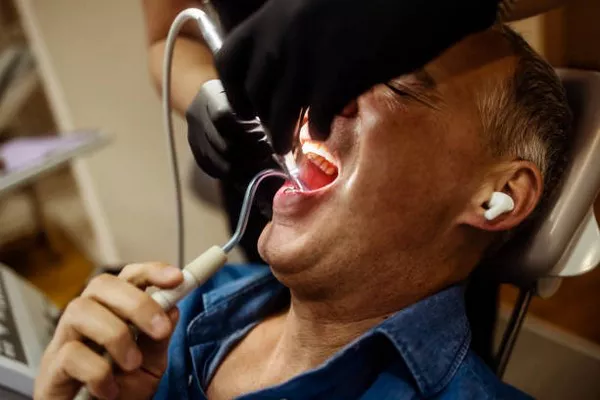Porcelain fillings, also known as inlays, are a popular choice for dental restoration due to their durability, natural appearance, and compatibility with oral tissues. Unlike traditional metal fillings, porcelain fillings are custom-made in a dental laboratory to match the color and shape of the patient’s tooth precisely. This customization ensures a seamless blend with the natural tooth structure, making them virtually indistinguishable from surrounding teeth.
Porcelain fillings differ from other types of dental fillings, such as amalgam and composite resin, in their composition and application. While amalgam fillings consist of a mixture of metals, including mercury, and composite resin fillings are made of a tooth-colored plastic and glass mixture, porcelain fillings are crafted from a ceramic material. This material closely mimics the appearance and texture of natural teeth, making porcelain fillings an aesthetically pleasing option for dental restorations.
Cost Range
The cost of porcelain fillings can vary depending on various factors, including the size of the cavity, the tooth’s location, and the fees charged by the dentist. On average, patients can expect to pay between $700 and $1,418 per procedure for porcelain fillings. However, this cost may fluctuate based on individual circumstances and geographical location.
Factors Influencing Cost
Several factors can influence the cost of porcelain fillings:
- Size of the Cavity: Larger cavities may require more extensive restoration, resulting in higher material and labor costs.
- Tooth Location: Teeth located in more visible areas, such as the front teeth, may require meticulous customization to achieve a natural appearance, potentially increasing the overall cost.
- Dentist’s Fees: The experience and expertise of the dentist performing the procedure can affect the cost of porcelain fillings. Dentists with specialized training or advanced technology may charge higher fees for their services.
Insurance Coverage
Dental insurance coverage for porcelain fillings varies depending on the patient’s insurance plan and provider. While some insurance plans may cover a portion of the cost of porcelain fillings, others may classify them as a cosmetic procedure and provide limited or no coverage. Patients are advised to consult their insurance provider to determine the extent of coverage for porcelain fillings and any associated out-of-pocket expenses.
Comparison with Other Materials
Porcelain fillings offer several advantages over alternative filling materials:
- Cost: Although porcelain fillings may have a higher upfront cost compared to materials like amalgam, their durability and natural appearance can make them a cost-effective long-term investment.
- Appearance: Porcelain fillings closely resemble natural teeth in color and texture, making them virtually undetectable in the mouth. This aesthetic advantage makes them an ideal choice for visible teeth.
- Strength and Durability: Porcelain fillings are highly durable and resistant to wear, making them suitable for restoring both front and back teeth. Unlike composite resin fillings, porcelain fillings do not stain or discolor over time, maintaining their appearance for years to come.
Procedure Details
The process of getting a porcelain filling typically involves the following steps:
- Preparation: The dentist begins by numbing the affected tooth and surrounding area with a local anesthetic to ensure a comfortable experience for the patient. Once numb, the dentist removes any decay or damage from the tooth, preparing it for restoration.
- Impression: After the tooth is prepared, the dentist takes an impression of the tooth using dental putty or digital scanning technology. This impression is used to create a custom-made porcelain filling that fits precisely within the prepared cavity.
- Temporary Filling: While the permanent porcelain filling is being fabricated in a dental laboratory, the dentist may place a temporary filling to protect the tooth.
- Placement: Once the porcelain filling is ready, the patient returns to the dentist for placement. The dentist carefully bonds the filling to the tooth using dental cement, ensuring a secure and long-lasting restoration.
- Polishing: After placement, the dentist polishes the filling to achieve a smooth surface and natural shine, blending seamlessly with the surrounding teeth.
Benefits and Drawbacks
Porcelain fillings offer several benefits over other types of dental fillings:
- Natural Appearance: Porcelain fillings closely mimic the appearance of natural teeth, providing a seamless and aesthetically pleasing restoration.
- Durability: Porcelain fillings are highly durable and resistant to wear, making them suitable for restoring both front and back teeth.
- Stain Resistance: Unlike composite resin fillings, porcelain fillings do not stain or discolor over time, maintaining their appearance for years to come.
However, porcelain fillings also have some drawbacks:
- Cost: Porcelain fillings tend to be more expensive than alternative filling materials, such as amalgam and composite resin.
- Fragility: While porcelain fillings are durable, they may chip or break under excessive force, particularly in patients who grind or clench their teeth.
- Multiple Visits: The process of getting a porcelain filling typically requires multiple visits to the dentist, as the filling must be custom-made in a dental laboratory.
Maintenance and Care
To prolong the lifespan of porcelain fillings and maintain optimal oral health, patients should:
- Practice Good Oral Hygiene: Brush and floss regularly to prevent plaque buildup and reduce the risk of decay around the filling.
- Avoid Excessive Force: Avoid habits such as teeth grinding or chewing on hard objects, as these can increase the risk of chipping or fracturing the porcelain filling.
- Attend Regular Dental Checkups: Visit the dentist regularly for routine checkups and cleanings to monitor the condition of the filling and address any issues promptly.
Alternatives
In addition to porcelain fillings, patients may consider the following alternative treatments or filling materials:
- Amalgam Fillings: Made of a mixture of metals, including mercury, silver, tin, and copper, amalgam fillings are durable and cost-effective but may not be suitable for visible teeth due to their metallic appearance.
- Composite Resin Fillings: Composed of a tooth-colored plastic and glass mixture, composite resin fillings offer a natural appearance but may be more prone to staining and wear compared to porcelain fillings.
- Gold Fillings: Gold fillings are highly durable and long-lasting but are often more expensive than other filling materials and may not be preferred for aesthetic reasons.
Conclusion
Porcelain fillings offer a durable, natural-looking option for restoring damaged or decayed teeth. While they may have a higher upfront cost compared to other filling materials, their aesthetic benefits and long-term durability make them a popular choice among patients seeking quality dental restorations. By understanding the factors that influence the cost of porcelain fillings, patients can make informed decisions about their dental care and choose the option that best meets their needs and budget.
FAQs About Dental Fillings
1. Are porcelain fillings worth it?
Porcelain fillings, also known as inlays, offer several benefits that make them worth considering for dental restoration. These fillings closely mimic the appearance of natural teeth, providing a seamless and aesthetically pleasing restoration. Additionally, porcelain fillings are highly durable and resistant to wear, making them suitable for restoring both front and back teeth. While porcelain fillings may have a higher upfront cost compared to other filling materials, their longevity and aesthetic advantages can make them a worthwhile investment for patients seeking quality dental restorations.
2. Are porcelain fillings more expensive?
Yes, porcelain fillings tend to be more expensive than other types of dental fillings, such as amalgam and composite resin. The cost of porcelain fillings can vary depending on various factors, including the size of the cavity, the tooth’s location, and the fees charged by the dentist. On average, patients can expect to pay between $700 and $1,418 per procedure for porcelain fillings. However, despite the higher initial cost, porcelain fillings offer long-term durability and aesthetic benefits that may justify the investment for many patients.
3. How much does filling cost in Hong Kong?
The cost of dental fillings in Hong Kong can vary depending on factors such as the type of filling material used, the size of the cavity, and the dentist’s fees. On average, patients can expect to pay between HK$800 and HK$2,000 for a dental filling procedure in Hong Kong. The cost may fluctuate based on individual circumstances and the specific dental clinic or practitioner chosen. Patients are advised to consult with their dentist for an accurate estimate of the cost of filling treatment based on their unique needs and circumstances.
4. What is the most expensive tooth filling?
Gold fillings are often considered the most expensive type of tooth filling. Gold fillings, also known as gold inlays or onlays, are made of a high-quality gold alloy and are highly durable and long-lasting. While gold fillings offer excellent longevity and strength, they are typically more expensive than other filling materials due to the cost of the gold material and the specialized techniques required for placement. Despite their high cost, gold fillings are valued for their durability and biocompatibility, making them a preferred option for some patients seeking premium dental restorations.
































